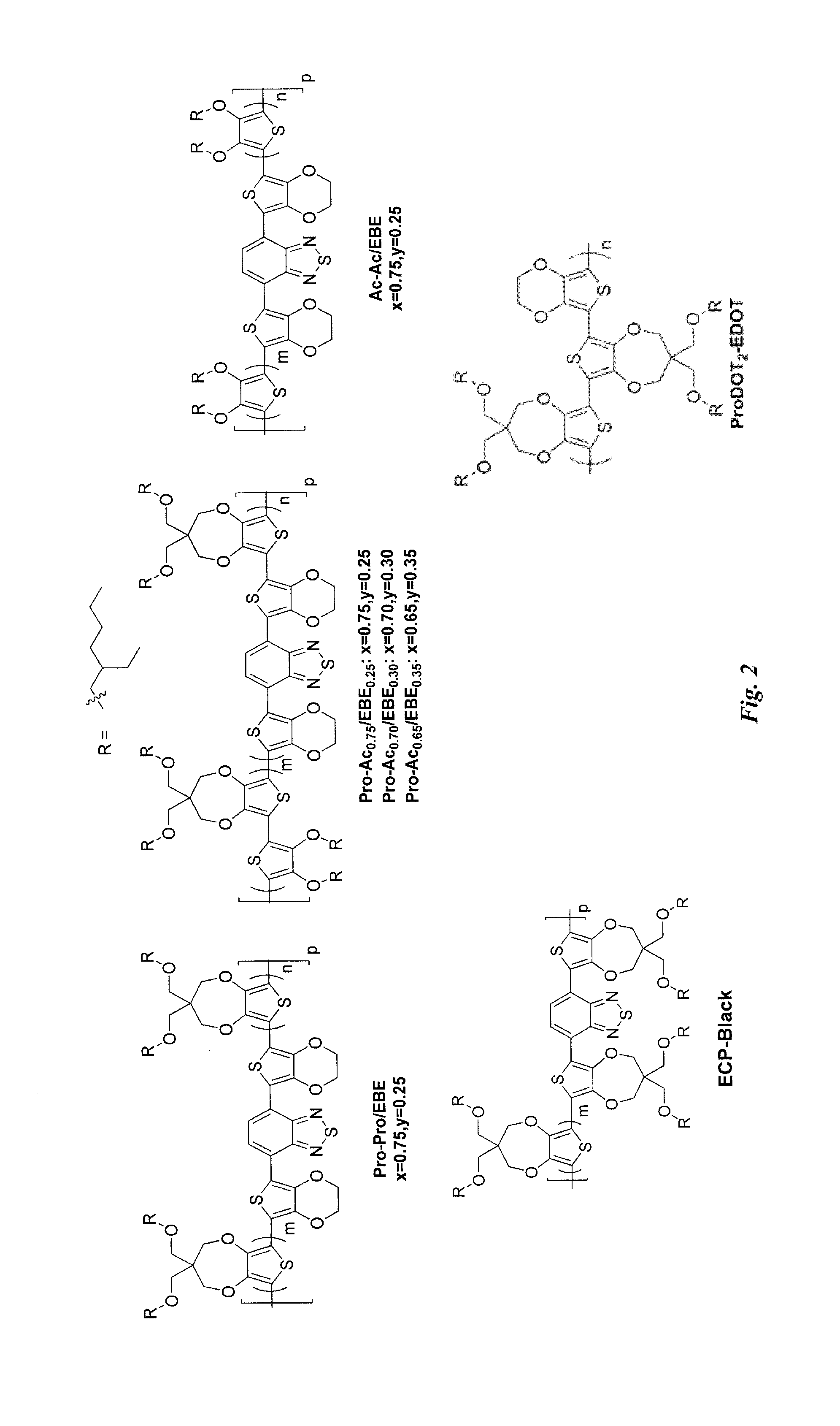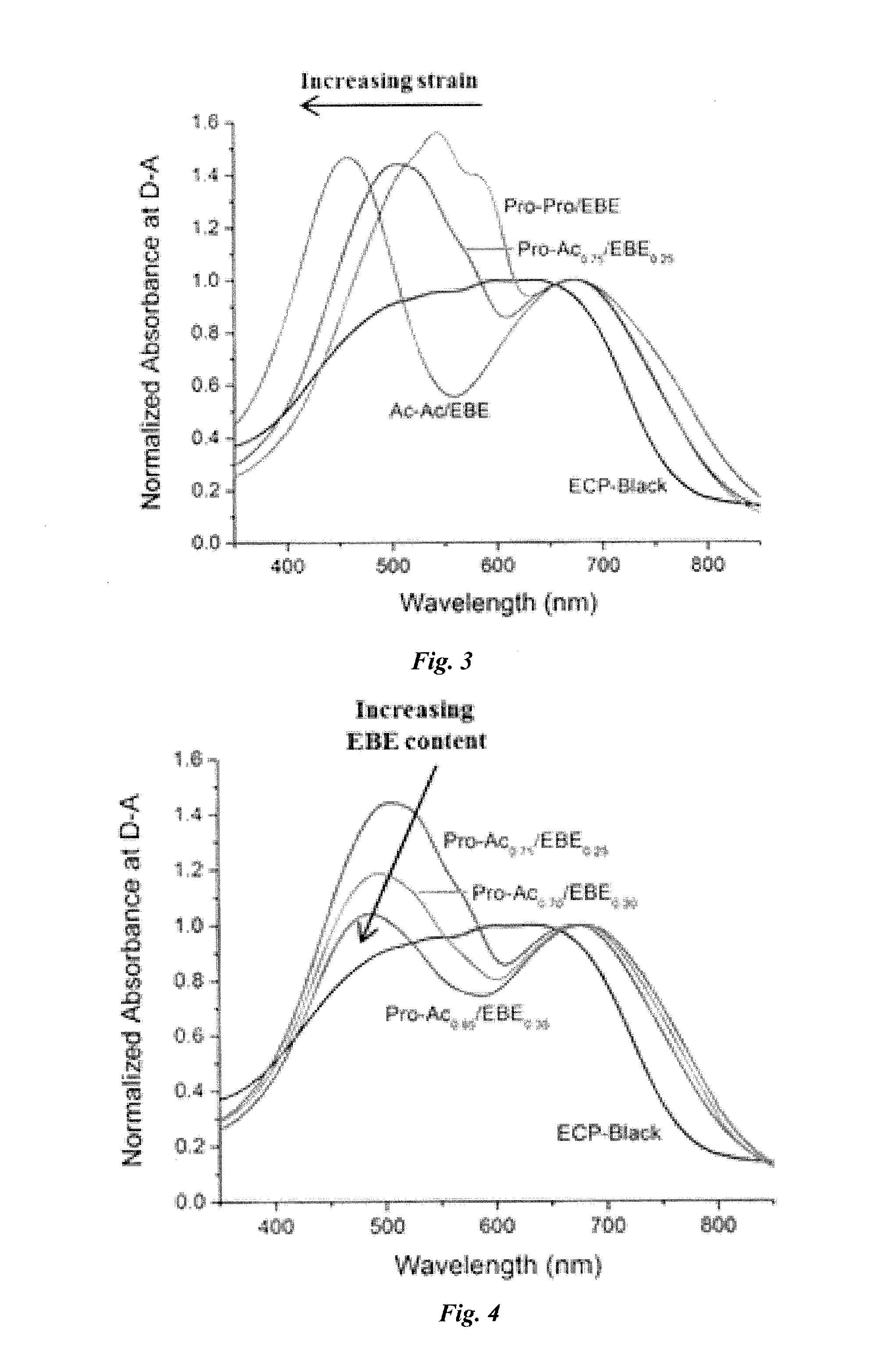Donor-Acceptor Compositions to Achieve High Contrast Broadly Absorbing Electrochromic Polymers
a technology of electrochromic polymers and donor acceptance compositions, applied in the direction of optics, instruments, coatings, etc., can solve the problems of inability to meet the speed requirements of applications, metal oxide electrochromic windows unfortunately possess a considerable degree of residual absorption in their transmisive state, and less than desirable contrast across the visible spectrum during electrochromic switching. achieve the effect of improving contrast electrochromic polymers
- Summary
- Abstract
- Description
- Claims
- Application Information
AI Technical Summary
Benefits of technology
Problems solved by technology
Method used
Image
Examples
Embodiment Construction
[0025]Embodiments of the invention are directed to an electrochromic polymer ECP that broadly absorbs across the visible spectrum in the neutral state and can be converted to a highly transmissive oxidized state with high contrast. All polymers disclosed herein arc copolymers, though recited as polymers. The ECP possess a black, brown, deep purple, green, blue or cyan neutral colored state. The ECP possesses a desired color and has the capability to switch to a highly contrasting transmissive state by combining steric control due to the choice of the structures and proportions of main chain electron-rich rings and use of a “relaxed” donor-acceptor (D-A) unit of the chain. A “relaxed” donor-acceptor (DA) unit is a DAD trimer unit comprising an aromatic electron acceptor unit flanked by sterically (torsionally) relaxed heteroaromatic donor units, where steric interactions do not promote orthogonality between adjacent D and A units to limit the conjugation to less than the entire three...
PUM
| Property | Measurement | Unit |
|---|---|---|
| Δ | aaaaa | aaaaa |
| Δ % T | aaaaa | aaaaa |
| Δ % T | aaaaa | aaaaa |
Abstract
Description
Claims
Application Information
 Login to View More
Login to View More - R&D
- Intellectual Property
- Life Sciences
- Materials
- Tech Scout
- Unparalleled Data Quality
- Higher Quality Content
- 60% Fewer Hallucinations
Browse by: Latest US Patents, China's latest patents, Technical Efficacy Thesaurus, Application Domain, Technology Topic, Popular Technical Reports.
© 2025 PatSnap. All rights reserved.Legal|Privacy policy|Modern Slavery Act Transparency Statement|Sitemap|About US| Contact US: help@patsnap.com



